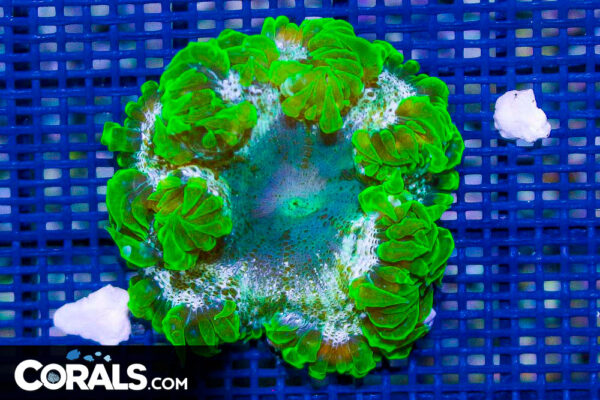Rock Flower Anemones For Sale
Also Known As: Flower Anemones, Rock Anemones, Rock Flower Anemones
Scientific Name: Epicystis crucifer
Why Buy this item: This is one of the most colorful and easy to keep types of anemones. They do not host clown fish. However, they come in a wide variety of colors and their low price points are sure to please all levels of reef tank hobbyists.
Feeding/Diet: These anemones do not require feeding, but they will greatly benefit from it. If you are looking to maximize color or growth, you may elect to target feed these anemones once per week.
Regional Differences: None
Natural environment Info:Flower anemones are found in lower light often murky areas of the reef. They are usually in the sand bed but footed securely down onto rocks just underneath the sand.
Natural Reproduction Info: Flower anemones reproduce both sexually (by spawning) and asexually (by splitting). We find them splitting once every 1 to 2 years. We also see them spawn in our systems about once per year. This usually results in many new little baby anemones of random color.
Growth Rate: Moderate. They will grow in size but it often takes a long time for them to actually split.
Growth Info:See above.
Placement:Flower anemones prefer to find a spot with a small hole in the rock or a spot in the sand bed they can settle into. They usually seek out a spot they find acceptable and stay there long term. This is very uncommon of anemones as most other types wander around often, especially at night. You should still plan for them to move at anytime and often until they settle in.
Propagation & Fragging: This anemone is very tough to propagate. It is best left alone to split on its own timeline or to spawn. If your goal is to have them spawn in your tank it is best to have several anemones and a larger sand substrate to increase the likelihood of success. We have never seen the baby anemone pop up on rocks. They seem to only attach to our larger sand substrate.
Shipping Info: This anemone ships very well and has a very low risk of dying in transit when packed properly. Do not be surprised to see substrate on the foot of the anemone upon arrival. They tend to grab on and we don’t want to force them to let go and risk tearing their foot.
What to look for when buying: Be sure the specimen you are buying is well settled in and proven to be adjusting well to captivity or just adjusting well to its aquarium after being shipped from anywhere. It should be rich in color and not pastel or bleachy looking. The anemone should be fully opened and extended. It is also important to observe that the mouth is fully closed and not gapping opened.
Common/Known issues:
It is important to not buy an anemone that is too fresh or recently shipped. They need time to acclimate and rest after being collected and received, even from the best of suppliers.
It is a common problem for this and all anemones to have their foot torn either when collected or when handled at the point of sale. Often times in the proper conditions they will heal without any issue. However, you should prefer your anemone arrive without any foot damage.
All of the above are things we look for and watch closely before offering any of these specimens for sale.










